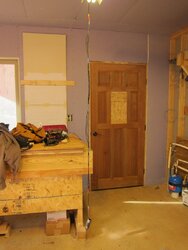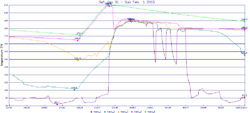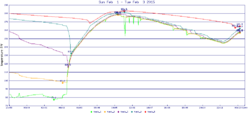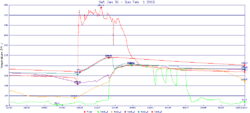I've read a lot of the threads on this board about stratification with a Garn. I think I understand the concepts pretty well and I know that during the off-cycle the water stratification is your friend. It keeps the hottest water in your supply while the coolest stays in the bottom of the tank. I understand that the cold water rolls upward during the firing cycle, although I have noticed the amount of cold water being returned while firing seems to greatly affect the amount of water homogenized by the roll. The more cold water returned during firing, the less the roll seems to homogenize the tank.
So my issue is this unwanted stratification during the burn-cycle. I've noticed that one or two Garn owners have went so far as to install a mix loop to activate during a burn-cycle so that they can maximize the total BTU storage by homogenizing the temperature of the water in the tank during the burn cycle. I'm wondering if this is something I should consider? I try not to take the controller temp above 190* or so, but it really bothers me knowing that so few gallons of the total tank are at that temp. I would really love it if I could get the entire tank to an even 185* or so.
In my situation, I'm using only a water to air exchanger to heat my home this winter. By next winter I will add about 2000SF of retrofit under-floor aluminum plates, and some radiators and I expect to have less of an issue with water temps. But even at that point, I can't help but think it's a major advantage to be able to homogenize the tank temp during firing.
Can someone with some hands-on experience with using a mixing loop post some comments? I'd be curious to know the details on how you installed your loop, what size pump you use, etc? I'm also wondering if you feel it was worth the effort?
So my issue is this unwanted stratification during the burn-cycle. I've noticed that one or two Garn owners have went so far as to install a mix loop to activate during a burn-cycle so that they can maximize the total BTU storage by homogenizing the temperature of the water in the tank during the burn cycle. I'm wondering if this is something I should consider? I try not to take the controller temp above 190* or so, but it really bothers me knowing that so few gallons of the total tank are at that temp. I would really love it if I could get the entire tank to an even 185* or so.
In my situation, I'm using only a water to air exchanger to heat my home this winter. By next winter I will add about 2000SF of retrofit under-floor aluminum plates, and some radiators and I expect to have less of an issue with water temps. But even at that point, I can't help but think it's a major advantage to be able to homogenize the tank temp during firing.
Can someone with some hands-on experience with using a mixing loop post some comments? I'd be curious to know the details on how you installed your loop, what size pump you use, etc? I'm also wondering if you feel it was worth the effort?
Last edited:







